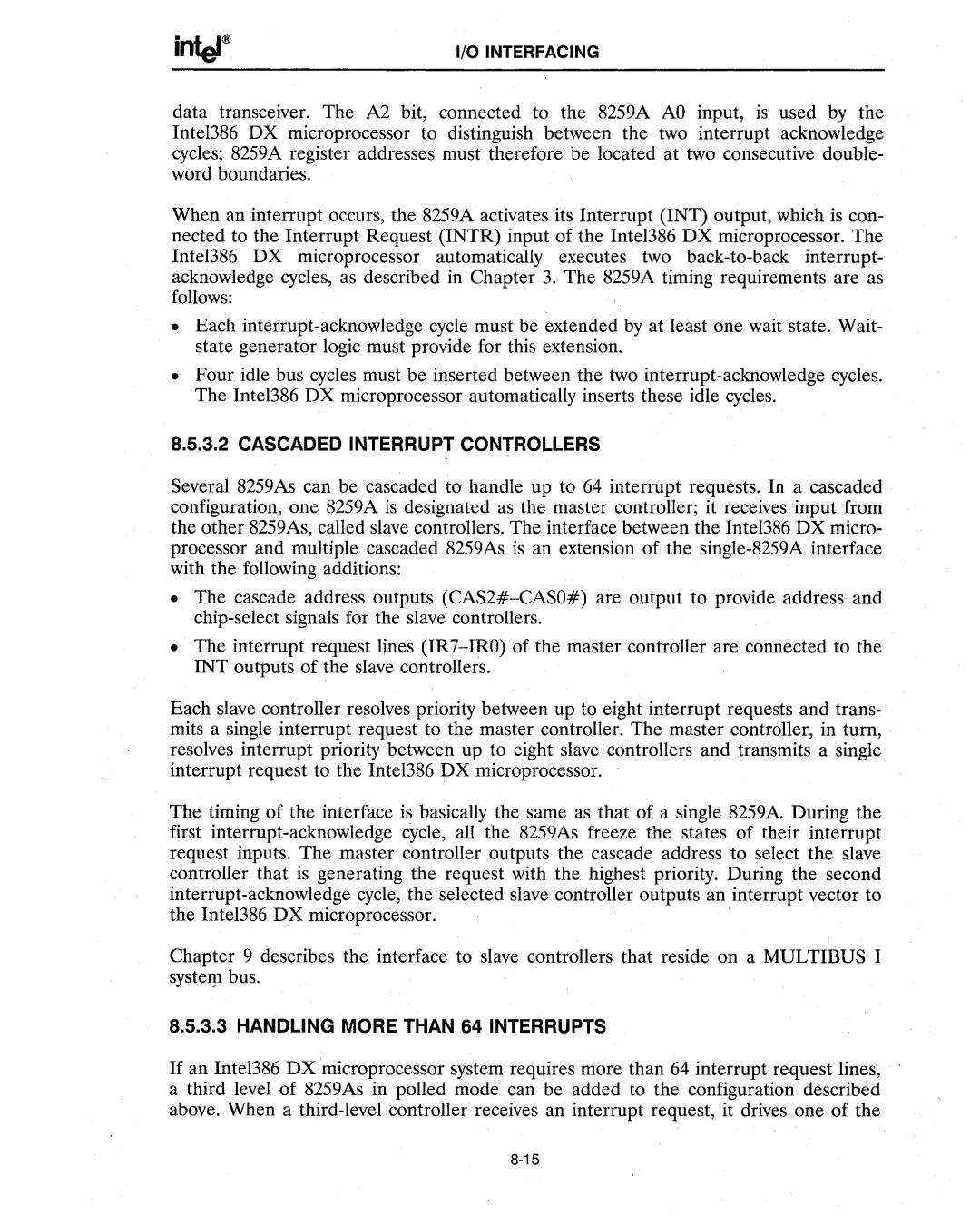
I/O INTERFACING
data transceiver. The A2 bit, connected to the 8259A AO input, is used by the Intel386 DX microprocessor to distinguish between the two interrupt acknowledge cycles; 8259A register addresses must therefore be located at two consecutive double- word boundaries.
When an interrupt occurs, the 8259A activates its Interrupt (INT) output, which is con- nected to the Interrupt Request (INTR) input of the Intel386 DX microprocessor. The Intel386 DX microprocessor automatically executes two
•Each
•Four idle bus cycles must be inserted between the two
8.5.3.2 CASCADED INTERRUPT CONTROLLERS
Several 8259As can be cascaded to handle up to 64 interrupt requests. In a cascaded configuration, one 8259A is designated as the master controller; it receives input from the other 8259As, called slave controllers. The interface between the Intel386 DX micro- processor and multiple cascaded 8259As is an extension of the
•The cascade address outputs
•The interrupt request ljnes
Each slave controller resolves priority between up to eight interrupt requests and trans- mits a single interrupt request to the master controller. The master controller, in turn, resolves interrupt priority between up to eight slave controllers and transmits a single interrupt request to the Intel386 DX microprocessor.
The timing of the interface is basically the same as that of a single 8259A. During the first
Chapter 9 describes the interface to slave controllers that reside on a MULTIBUS I systetp bus.
8.5.3.3 HANDLING MORE THAN 64 INTERRUPTS
If an Inte1386 DX microprocessor system requires more than 64 interrupt request lines, a third level of 8259As in polled mode can be added to the configuration described above. When a
